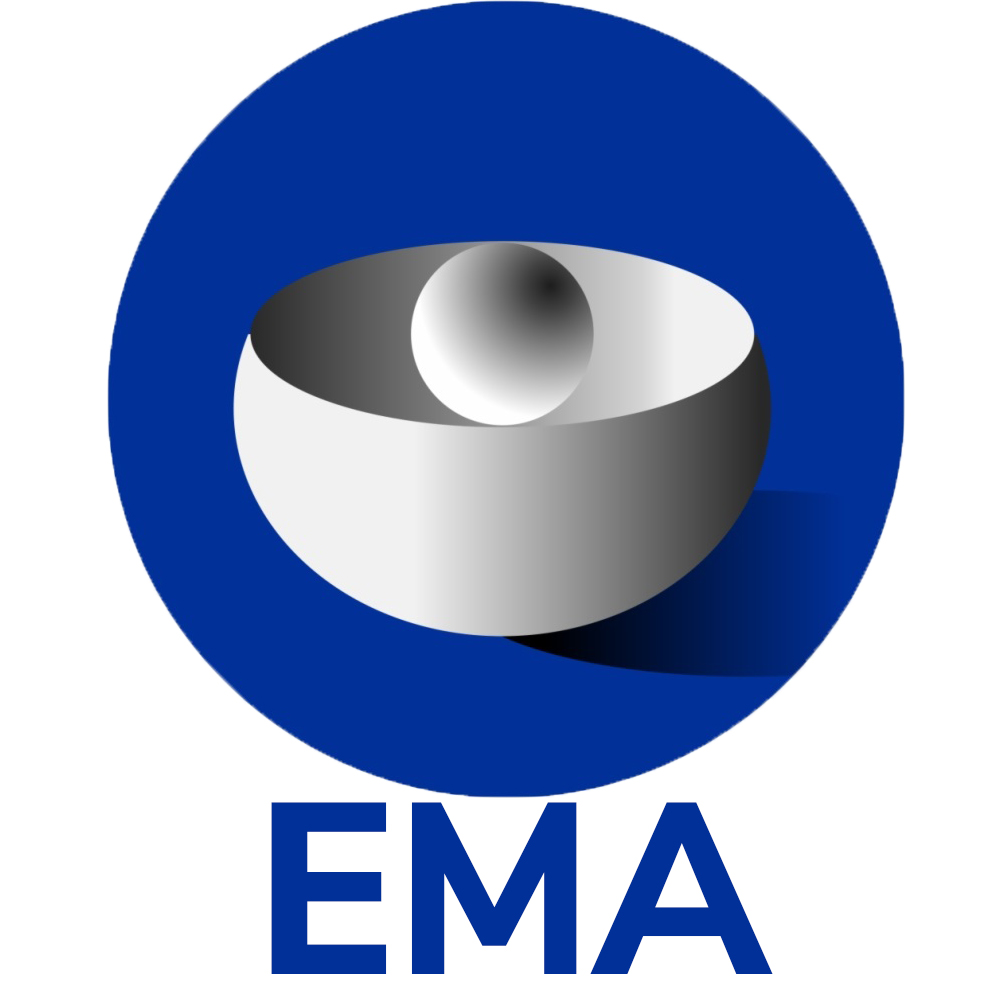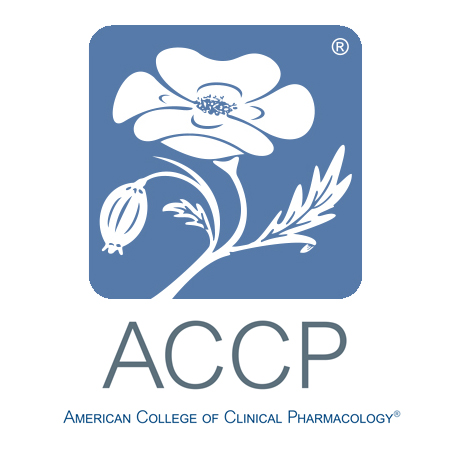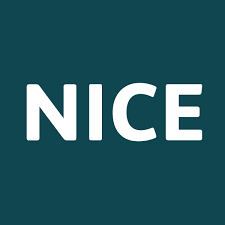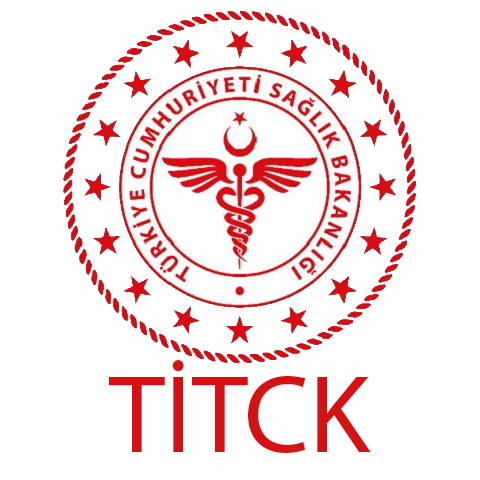
HOW MANY TYPES OF MEDICINE EXIST? WHAT IS QUACK MEDICINE?
Prof. Dr. F. Cankat Tulunay
In recent years, various types of “medicine” have emerged under different names in Turkey, causing widespread confusion. Some of these terms represent pure quackery, while others are aimed at deceiving patients for profit. Each of these approaches has its own orthodox defenders, and unfortunately, despite regulations by the Ministry of Health requiring practitioners to be certified medical doctors or dentists, many of those practicing these methods hold neither medical certifications nor diplomas. In other words, anyone can arbitrarily choose a “medical” method and gamble with patients’ lives. Another group consists of graduates of conventional medical schools who, after failing to obtain a specialty or succeed in family medicine, exploit their physician title for financial gain. These individuals often use social media to attract patients and practice deceptive medicine under the guise of legitimacy.
CONVENTIONAL (TRADITIONAL) MEDICINE
Conventional medicine refers to the classic medical education provided by mainstream medical schools, focusing on drug- and surgery-based approaches. Also known as Western medicine, it emphasizes evidence-based diagnosis and treatment of diseases and symptoms using scientifically validated methods. These include pharmacological therapies, surgical interventions, and other therapeutic techniques.
Conventional medicine generally defines health as the absence of disease, and centers its attention on abnormalities in specific organs or tissues. Practitioners—such as physicians, nurses, pharmacists, and therapists—deliver care that is regulated, licensed, and based on scientifically proven approaches.
In this framework, the primary goal is the treatment and management of existing health issues and the provision of preventive care services. The human body is approached from a biophysical and biochemical perspective, and diagnoses and treatments are shaped by large-scale population-based research. Rather than individualized approaches, conventional medicine generally prioritizes the most effective and broadly applicable treatment strategies until other options prove insufficient.
Due to its development and widespread application in the Western Hemisphere, it is often referred to as Western medicine. Patients and practitioners alike rely on data and scientific research to identify the most probable diagnosis and most effective treatments, based on statistically supported outcomes.
TRADITIONAL CHINESE MEDICINE (TCM)
Traditional Chinese Medicine (TCM) is a holistic medical system and healing tradition that has been practiced in China for over 5,000 years. Its therapeutic methods include acupuncture, Chinese herbal medicine, massage therapy, and Tui-Na, which combines healing touch with physical manipulation. TCM is considered one of the oldest and most extensively practiced medical systems in the world—predating Western medicine by approximately 3,800 years.
Historical records show that advanced medical practices were already being performed in China centuries before the birth of Christ. Despite this, Western medicine largely dismisses Chinese medicine, failing to acknowledge the long-standing safe and effective use of acupuncture, Chinese herbs, and other traditional methods.
The foundation of TCM lies in the balance of yin and yang, with the goal of preventing or healing illness by restoring harmony between these two complementary forces. According to TCM, when yin (the passive force) and yang (the active force) are in balance, the individual is healthy; disease results from a disruption of this balance.
One of the earliest written texts in Chinese medicine is the Huangdi Neijing (The Yellow Emperor’s Inner Canon), dating back to the 3rd century BCE. This classical text outlines the theoretical principles of TCM still in use today. According to legend, the Yellow Emperor observed the effects of various herbs on a soldier who had developed a stomach fistula from an arrow wound—laying the groundwork for empirical herbal observation in medicine.
In summary, traditional Chinese healers aim to restore the dynamic balance between yin and yang, which they believe governs not only the human body but also the entire universe.
Common Methods Used in TCM:
• Acupuncture: The insertion of very fine needles into specific points on the skin.
• Cupping Therapy: Applying heated glass cups to the skin to create suction.
• Herbal Medicine: Teas, powders, or capsules derived mostly from plant sources.
• Meditation: A method of calming the mind through focused stillness.
• Moxibustion: Burning dried herbs near the skin to stimulate healing.
• Tai Chi: A form of slow, deliberate movement synchronized with breath to enhance physical and mental balance.
AYURVEDIC MEDICINE
Ayurvedic medicine is a holistic medical system widely practiced in India and across South Asia. The term “Ayurveda” means “the science of life.” It adopts a natural, whole-person approach to health and wellness, grounded in thousands of years of development.
This system is organized according to individual energy patterns—including body constitution, dietary habits, digestive structure, and body temperature. Treatment involves a wide range of herbal medicines and natural substances, such as essential oils and coconut oil. The mind-body connection is a central concept in Ayurvedic medicine.
Modern scientific studies have confirmed the powerful medicinal effects of many Ayurvedic herbs. For example:
• Turmeric may slow the growth of cancerous tumors,
• Cinnamon helps regulate blood sugar levels,
• Gymnema sylvestre inhibits the absorption of dietary sugars and supports regeneration of insulin-producing beta cells in the pancreas.
Ayurveda has known and applied these principles for centuries. Ayurveda is based on the belief that every individual possesses certain life forces (doshas) and that all things in the universe are interconnected. A disturbance in one area can affect another. If imbalances are not corrected, disease and discomfort may develop. Rather than treating only symptoms, Ayurveda focuses on restoring balance and supporting health through diet, lifestyle changes, and natural therapies. It also emphasizes prevention. In some cases, however, specific therapeutic protocols are used for certain diseases.
Core Objectives of Ayurvedic Treatment:
• Support the elimination of toxins and foreign substances from the body
• Alleviate symptoms
• Boost disease resistance
• Reduce stress
• Promote harmony and balance in life
Common Treatment Methods:
• Internal cleansing (detoxification)
• Special diets rich in herbs and spices
• Herbal and botanical medicines
• Massage therapy using various oils
• Yoga
• Meditation
Scientific Evaluation of Ayurveda
• Limited High-Quality Research: While some clinical studies show promising results for Ayurvedic practices and herbal treatments, there is still a lack of large-scale, randomized, controlled trials by Western standards.
• Methodological Challenges: The holistic and individualized nature of Ayurveda, including complex herbal formulas, makes it difficult to conduct standard scientific trials. Isolating placebo effects and creating standardized protocols can be challenging.
• Herbal Research: Many Ayurvedic herbs and compounds have been studied in lab and animal models, showing anti-inflammatory, antioxidant, and anticancer potential. However, further human studies are required to confirm clinical relevance.
• Safety Concerns: Some Ayurvedic products have been found to contain heavy metals such as lead, mercury, and arsenic, raising safety concerns.
• Mind-Body Practices: Key components of Ayurveda like yoga and meditation are increasingly studied and have shown benefit in conditions such as stress, anxiety, cardiovascular health, and sleep disorders.
• Panchakarma: This detoxification and purification therapy is being studied, but further research is needed to validate its effectiveness.
• Diet and Lifestyle: Ayurvedic dietary principles and lifestyle changes are also under investigation for their long-term health effects.
COMPLEMENTARY MEDICINE
The term “complementary medicine” is often used by proponents of conventional medicine to assert intellectual ownership over non-mainstream therapies. While it supports the use of conventional treatments, complementary methods are usually confined to secondary or supportive roles.
Previously, the term “alternative medicine” was used for any practice outside mainstream medicine. However, this term has become outdated, as natural approaches are increasingly being adopted into the medical mainstream.
Complementary medicine includes substances like vitamins, minerals, herbal compounds, aromatherapy oils, and homeopathic preparations. These are often sold over-the-counter and also referred to as alternative remedies.
It is important to note that the term “natural” is not regulated when it comes to medicine. A product labeled as “natural” is not necessarily safe. For instance, herbs such as comfrey and kava are considered natural, but can cause serious liver damage.
Furthermore, a “natural” herbal or botanical supplement may contain dozens of chemical compounds, many of which are unknown or not fully studied.
Complementary health approaches generally include a wide range of practices, interventions, and natural products that:
• Are not part of conventional medical care, and
• Often originate outside typical Western practices.
ALTERNATIVE MEDICINE
Alternative medicine is a broad term encompassing various medical approaches that aim to prevent and treat diseases through methods distinct from Western (allopathic) medicine. These approaches traditionally originate in Eastern cultures and emphasize holistic treatment of the individual—focusing on the mind-body-spirit balance rather than solely on the disease.
Unlike conventional medicine, which is based on symptom-specific, pharmacological, or surgical interventions, alternative medicine aims to stimulate the body’s self-healing ability through energy balancing, herbal supplementation, and other natural techniques.
Although these practices are typically rooted in tradition and not commonly taught in Western medical schools, some are gaining interest and acceptance. Today, many physicians integrate both conventional and alternative methods in a personalized integrative medicine model—tailoring treatment to the individual.
There is also a growing body of large-scale research attempting to scientifically validate the anecdotal benefits of alternative therapies
Common Types of Alternative Medicine:
• Acupuncture
• Ayurveda
• Herbal medicine
• Body manipulation techniques (e.g., Yoga, Tai Chi, chiropractic, osteopathic manipulations, massage)
• Reiki
• Biofeedback
• Meditation
• Hypnosis
When Is Alternative Medicine Used?
Alternative approaches can be helpful in managing conditions where conventional treatment options are limited or unavailable, such as:
• Fatigue
• Common cold and flu
• Mild digestive issues
• Irritable Bowel Syndrome (IBS)
• Chronic pain
• Stress and mental health issues
• Certain neurological conditions
However, in conditions that require immediate medical or surgical intervention, such as appendicitis, alternative treatments are not appropriate and conventional care is essential.
COMPLEMENTARY AND ALTERNATIVE MEDICINE (CAM)
Complementary and Alternative Medicine (CAM) refers to medical practices that lie outside the scope of mainstream healthcare. These include treatments such as acupuncture, homeopathy, aromatherapy, meditation, and colonic irrigation.
There is no universally accepted definition of CAM. Although the terms “complementary” and “alternative” are often used together, it is helpful to distinguish between them:
• Complementary therapies are used alongside conventional medical treatments.
• Alternative therapies are used instead of conventional treatments.
Some treatments can fall into both categories depending on how they are used. For example, aromatherapy might be used as a complementary treatment to relieve nausea during chemotherapy, or as an alternative treatment for general stress without any conventional input.
Common Modalities in CAM: CAM includes a broad range of therapies, systems, and practices, such as:
• Herbal supplements
• Special diets
• Energy therapies (like Reiki)
• Body-based techniques (massage, chiropractic)
• Mind-body practices (yoga, meditation, guided imagery)
Some CAM practices are applied with the goal of improving health, managing symptoms, or supporting the healing process, while others are claimed (often without strong evidence) to treat or cure diseases.
Use of CAM in the United States: According to the 2007 National Health Interview Survey (NHIS), approximately 38% of U.S. adults and 12% of children reported using some form of CAM for health or wellness purposes, or to treat specific diseases.
Americans spent $33.9 billion out-of-pocket on CAM in the 12 months prior to the survey. This amount represents:
• About 1.5% of total healthcare expenditures ($2.2 trillion), and
• Around 11.2% of all out-of-pocket healthcare spending ($286.6 billion total, of which $33.9 billion went to CAM).
Of the $33.9 billion spent:
• $22.0 billion went to self-care items, including CAM products, classes, and materials.
• About $14.8 billion was spent on non-vitamin, non-mineral natural products, such as fish oil, glucosamine, and echinacea.
• Roughly $11.9 billion covered 354.2 million visits to CAM providers such as acupuncturists, chiropractors, and massage therapists.
Important Considerations
• Some CAM practices are based on principles or evidence that are not accepted by the majority of independent scientists.
• Others have limited but credible evidence supporting their use for specific conditions—e.g., chiropractic care for lower back pain.
In the UK, the National Health Service (NHS) only supports CAM in a limited number of situations. According to NICE (National Institute for Health and Care Excellence), CAM may be considered in select cases:
• Alexander Technique for Parkinson’s disease
• Ginger and acupressure for morning sickness
• Manual therapy for lower back pain
INTEGRATIVE MEDICINE
Integrative medicine is an approach that combines conventional medical treatments with complementary and alternative therapies, aiming to treat the whole person—body, mind, and spirit.
This model prioritizes natural therapies as first-line treatments, using drugs and surgery only when necessary. Integrative medicine emphasizes a comprehensive view of health and healing, focusing not only on the disease, but on the patient’s overall well-being and quality of life.
The philosophy behind integrative medicine is rooted in:
• Promoting the body’s natural healing capabilities
• Strengthening the immune system
• Encouraging lifestyle changes that reduce disease risk
• Managing stress and emotional well-being
• Building a partnership between the patient and practitioner
Key Features of Integrative Medicine:
• Uses the best evidence-based practices from both conventional and alternative medicine
• Respects patient preferences, values, and culture
• Treats chronic conditions by addressing root causes, not just symptoms
• Promotes prevention through healthy living
Integrative medicine does not reject conventional medicine, but rather enhances it with safe and effective complementary techniques. These may include:
• Nutritional therapy
• Yoga and meditation
• Massage therapy
• Acupuncture
• Herbal supplements
• Mind-body interventions
This patient-centered approach has gained popularity especially among individuals seeking non-pharmacological, less invasive options for managing chronic diseases such as:
• Stress and anxiety
• Chronic pain
• Autoimmune disorders
• Digestive issues
• Cardiovascular disease
QUACK MEDICINE
Quackery is frequently used interchangeably with health fraud and refers to the promotion of fraudulent or ignorant medical practices. A quack is defined as: “A person fraudulently claiming medical skill or knowledge,” or “Someone who pretends to have qualifications, credentials, or expertise—whether professional or public—that they do not actually possess.”
The term “quack” is derived from the old Dutch word kwakzalver, meaning someone who boasts about their healing salves or cures.
Common characteristics of quackery include:
• Use of dubious diagnostic tests
• Bogus diagnoses (often involving serious conditions like cancer)
• Untested, disproven, or pseudoscientific treatments
A Brief History of Quackery: Quack medicine has a long history, particularly in countries where medical regulation is weak. In the early days of the United States, before the rise of professional licensing, quackery flourished through unproven potions, tonics, and secret remedies.
Even today, quacks falsely claim to diagnose and treat diseases, exploiting the public’s trust and often targeting those suffering from chronic or incurable conditions, such as:
• Arthritis
• Multiple sclerosis
• Certain types of cancer
Red Flags for Quackery
You can recognize quack practices when media or social media advertisements make unrealistic claims, such as:
• “Regrows hair overnight”
• “Cures acne permanently”
• “Erases wrinkles instantly”
• “Eliminates cellulite”
Quacks understand the powerful combination of ignorance, desperation, false hope, and vanity, and they often use manipulative testimonials from fake “patients” who claim miraculous improvements.
Since these therapies are not endorsed by reputable medical journals, such testimonials become a key marketing strategy. For the general public, these claims become the foundation of misplaced trust in quack practitioners.
The Most Serious Consequence: Death
The ultimate danger of quack medicine is the increased risk of death. Counterfeit or fraudulent drugs may not only lack active ingredients but can also contain harmful substances.
For example, a tragic case in Nigeria (1995) involved more than 50,000 people receiving vaccines that lacked any active compounds, leading to 2,500 deaths, according to the World Health Organization.
GLOBAL ANALYSIS: CAUSES AND CONSEQUENCES OF QUACK MEDICINE
(Based on the 2024 article in BMC Health Services Research, Volume 24, Article 64)
A comprehensive scoping review published in BMC Health Services Research in 2024 examined the *causes and consequences of quack medicine in healthcare systems worldwide. The review identified six major categories of causes behind the proliferation of fraudulent and unscientific health practices:
Root Causes of Quack Medicine
1. Political Factors
• Liberal economic policies
• Weak or nonexistent regulatory systems
• Lack of political will to enforce medical standards
2. Economic Factors
• Poverty
• High healthcare costs
• Supply-demand imbalances in access to safe, regulated treatments
3. Socio-Cultural Factors
• Traditional beliefs and cultural habits
• Low levels of health literacy
• Trust in informal or unlicensed practitioners
4. Technical-Organizational Factors
• Structural deficiencies in health systems
• Inadequate oversight and inspection mechanisms
• Shortage of qualified healthcare professionals
5. Legal Factors
• Absence or poor enforcement of health laws
• Ineffective legal sanctions against quack practitioners
6. Psychological Factors
• Desperation and hopelessness
• Blind faith in “miracle cures” or non-scientific beliefs
• Public vulnerability to persuasive but deceptive claims
Consequences of Quack Medicine
The consequences are classified into three main domains:
1. Health Consequences
• Increased mortality due to ineffective or dangerous treatments
• Delayed or denied access to appropriate care
• Drug poisoning and adverse reactions
• Antibiotic resistance due to counterfeit or low-quality drugs
• Multiple drug interactions and treatment complications
• Exacerbation of anxiety, depression, and other mental health problems
• Iatrogenic harm due to disease mongering and overdiagnosis
2. Economic Consequences
• Financial losses for individuals and families
• Waste of national healthcare resources
• Additional burden on health insurance systems
• Fraudulent medical records that can affect employment or insurance eligibility
• Diversion of funds from more effective treatments
3. Social Consequences
• Erosion of public trust in the medical system and pharmaceutical industry
• Damage to the scientific credibility of medicine and researchers
• Decline in public confidence in licensed healthcare professionals
• Undermining of modern medical ethics through manipulation and misinformation
Recommendations of the Article
To effectively combat quack medicine, the study highlights the need for:
• Stronger regulation and law enforcement
• Improvements in public health literacy and education
• Greater access to safe, affordable, and culturally appropriate healthcare services
• Interdisciplinary cooperation between healthcare providers, scientists, and policymakers
TREATMENTS WITHOUT SCIENTIFIC EVIDENCE
Treatments lacking scientific evidence typically share the following characteristics:
• Their efficacy and safety have not been confirmed by randomized controlled clinical trials
• Their proposed mechanisms of action are biologically implausible or inconsistent with established scientific principles
• Claims of effectiveness are based on anecdotal evidence, personal testimonials, or isolated observations
• Reported outcomes may be largely attributable to the placebo effect
1. Energy Medicine and Spiritual Healing
These methods are based on the manipulation of supposed “energy flows” in the body—phenomena that cannot be detected or measured using current scientific tools.
Examples include:
• Reiki
• Bioenergy healing
• Pranic healing
• Quantum thought therapy
• Aura cleansing
• Chakra balancing
According to systematic reviews and organizations such as the U.S. National Center for Complementary and Integrative Health (NCCIH) and JAMA, these methods show no scientifically verifiable effectiveness. They are subjective and lack neurobiological or physiological foundations.
2. Herbal and Natural Products (Used for Unproven Conditions)
While certain herbs may be helpful for limited indications (e.g., ginger for nausea), many claims related to serious conditions like cancer or COVID-19 are unsubstantiated.
Examples include:
• Aloe vera for cancer
• Nettle for prostate cancer
• Royal jelly for diabetes
• Turmeric for “all inflammation”
• Elderberry for COVID-19 prevention
Some herbal products may offer limited benefits, but most therapeutic claims are exaggerated or unsupported by robust scientific data.
3. Homeopathy
• Homeopathic remedies contain extremely diluted substances, often to the point where no molecules of the active ingredient remain.
• Based on the principle of “like cures like,” homeopathy is incompatible with modern pharmacology.
Extensive evaluations, including by Cochrane Reviews, the British Medical Journal, and Australia’s NHMRC, conclude that homeopathy is no more effective than a placebo and lacks any reliable scientific basis.
4. Magnetic and Electrical Devices
Examples include:
• Magnetic bracelets
• Bioresonance machines
• Unapproved electrotherapy devices
• Frequency adjustment gadgets
Reviews by Cochrane and statements from the FDA indicate that these devices show no clinical efficacy. The therapeutic “frequencies” they claim to generate have no measurable physiological basis.
5. Ozone Therapy
• Ozone administered intravenously or rectally is sometimes claimed to treat cancer, hepatitis, or HIV.
• However, no credible clinical trials support these claims.
The FDA classifies ozone as a toxic gas and prohibits its use in medical treatments due to serious health risks.
6. Folk or Traditional Practices (When Used Improperly)
These include:
• Leech therapy (sometimes useful in specific indications, but often misapplied)
• Cupping
• Hijama (wet cupping)
• Snake or scorpion venom for cancer
• Faith healing, prayer-based “energy transfer,” or exorcism rituals
These practices, especially when used in place of standard care, may delay proper diagnosis and treatment.
7. Unscientific Approaches to Chronic and Serious Diseases
Examples:
• “Alkaline water” for cancer
• Mega-doses of vitamins (e.g., B12 or C) for autism
• Ozone therapy for HIV or cancer
• Detox products for liver cleansing
• Blood type diets
• Urine therapy
These are biologically unsubstantiated and often promoted without any credible scientific support.
🇹🇷 THE SITUATION IN TURKEY
According to Turkey’s Ministry of Health, the 2014 Regulation on Traditional and Complementary Medicine Practices permits the use of several methods, some of which lack proven effectiveness.
Officially authorized practices include:
• Herbal medicine (phytotherapy)
• Leech therapy
• Homeopathy
• Chiropractic
• Larval therapy
• Hypnosis
• Apitherapy
• Mesotherapy
• Hijama
• Music therapy
• Ozone therapy
• Reflexology
• Acupuncture
• Prolotherapy
• Osteopathy
Many patients seek these treatments for:
• Shortness of breath
• Chronic wounds
• Joint and muscle pain
• Meniscal injuries
• Herniated discs
• Fatigue
• Skin care issues
However, it’s important to note that some of these practices lack sufficient clinical evidence and may pose risks if applied by unqualified individuals.
Not: AI support and translation used in this article.







